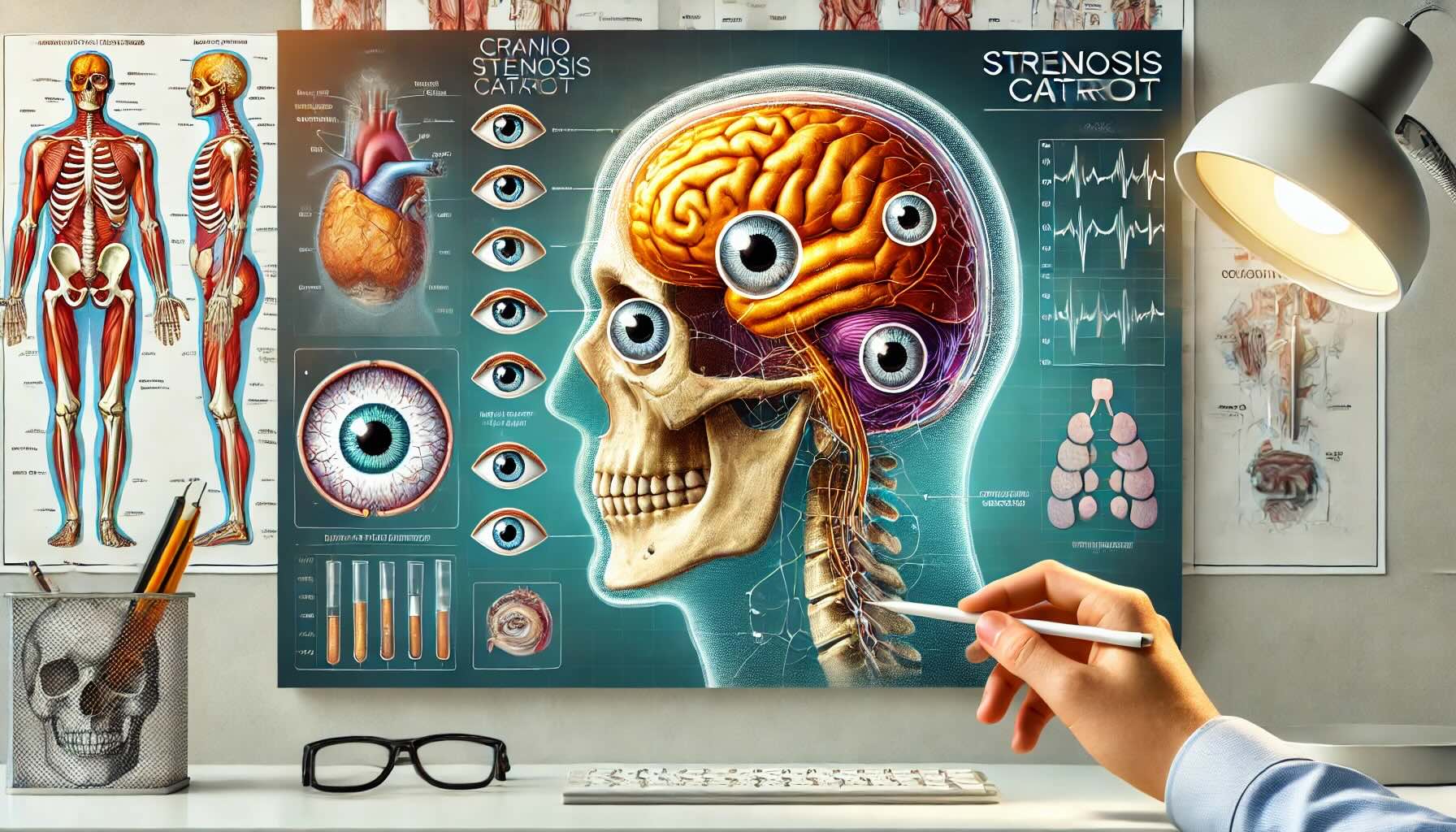
Craniostenosis cataract might sound like a complex medical term, but understanding it can be simpler than you think. This condition involves the premature fusion of skull bones (craniostenosis) and clouding of the eye's lens (cataract). Craniostenosis can lead to abnormal head shapes and potential brain development issues, while cataracts can cause vision problems. Knowing the facts about this condition is crucial for early detection and treatment. From its causes and symptoms to treatment options, we’ll break down everything you need to know. Ready to learn more? Let's dive into 30 essential facts about craniostenosis cataract!
Key Takeaways:
- Craniostenosis cataract is a rare condition causing skull and eye abnormalities. Early diagnosis and multidisciplinary treatment are crucial for better outcomes and normal development.
- Genetic mutations and environmental factors contribute to craniostenosis cataract. Ongoing research aims to improve understanding and treatment, offering hope for better outcomes in the future.
What is Craniostenosis Cataract?
Craniostenosis cataract is a rare condition involving both cranial and ocular abnormalities. It combines craniosynostosis, where skull bones fuse prematurely, with cataracts, which cloud the eye's lens. Understanding this condition requires diving into its complexities.
- Craniostenosis refers to the premature fusion of one or more cranial sutures, leading to abnormal skull shape and potential brain development issues.
- Cataracts are characterized by clouding of the eye's lens, leading to decreased vision and, if untreated, blindness.
- Craniostenosis cataract is an extremely rare condition, with only a few documented cases worldwide.
- Genetic mutations often cause this condition, affecting genes responsible for skull and eye development.
- Syndromic forms of craniostenosis cataract exist, where the condition is part of a broader syndrome like Crouzon or Apert syndrome.
Symptoms and Diagnosis
Recognizing the symptoms early can lead to better management. Diagnosis often involves a combination of physical exams and imaging techniques.
- Abnormal head shape is a primary symptom due to the premature fusion of skull bones.
- Bulging eyes may occur, especially in syndromic cases.
- Vision problems are common, ranging from mild blurriness to severe vision loss.
- Developmental delays can happen due to increased intracranial pressure affecting brain growth.
- CT scans and MRI are crucial for diagnosing craniosynostosis by providing detailed images of the skull.
- Ophthalmologic exams help diagnose cataracts by examining the eye's lens for cloudiness.
Causes and Risk Factors
Understanding the causes and risk factors can help in early detection and prevention strategies.
- Genetic mutations are the primary cause, often inherited in an autosomal dominant pattern.
- Environmental factors during pregnancy, such as exposure to certain drugs or infections, may increase risk.
- Family history of craniosynostosis or cataracts can elevate the likelihood of the condition.
- Advanced paternal age has been linked to a higher risk of genetic mutations leading to craniostenosis cataract.
Treatment Options
Treatment often involves a multidisciplinary approach, addressing both cranial and ocular issues.
- Surgery is the main treatment for craniosynostosis, aiming to correct skull shape and relieve intracranial pressure.
- Cataract surgery involves removing the cloudy lens and replacing it with an artificial one.
- Early intervention is crucial for preventing complications and promoting normal development.
- Regular follow-ups with a team of specialists, including neurosurgeons and ophthalmologists, are essential for ongoing care.
- Physical therapy may be needed to address developmental delays and improve motor skills.
Prognosis and Long-Term Outlook
The long-term outlook varies depending on the severity and timing of treatment.
- Early surgical intervention generally leads to better outcomes, with many children achieving normal development.
- Untreated cases can result in severe complications, including permanent vision loss and cognitive impairments.
- Regular monitoring is necessary to detect and address any emerging issues promptly.
- Supportive therapies like speech and occupational therapy can help children reach their full potential.
Research and Future Directions
Ongoing research aims to improve understanding and treatment of craniostenosis cataract.
- Genetic studies are exploring the specific mutations involved, which could lead to targeted therapies.
- Advanced imaging techniques are being developed to provide better diagnostic accuracy.
- Minimally invasive surgical techniques are being researched to reduce recovery times and improve outcomes.
- Stem cell research holds potential for regenerating damaged tissues and improving vision.
- Patient registries are being established to collect data and improve understanding of this rare condition.
- Awareness campaigns aim to educate healthcare providers and the public about early signs and treatment options.
Final Thoughts on Craniostenosis Cataracts
Craniostenosis cataracts are a complex condition affecting both the skull and eyes. Understanding the symptoms, causes, and treatment options can make a big difference in managing this condition. Early diagnosis is crucial for effective treatment, often involving surgery to correct skull shape and cataract removal to restore vision. Genetic factors play a significant role, so family history should be considered. Regular check-ups and consultations with specialists are essential for monitoring and managing the condition. Awareness and education about craniostenosis cataracts can lead to better outcomes and improved quality of life for those affected. Stay informed, seek professional advice, and support research efforts to find more effective treatments. By doing so, we can offer hope and help to those dealing with this challenging condition.
Frequently Asked Questions
Was this page helpful?
Our commitment to delivering trustworthy and engaging content is at the heart of what we do. Each fact on our site is contributed by real users like you, bringing a wealth of diverse insights and information. To ensure the highest standards of accuracy and reliability, our dedicated editors meticulously review each submission. This process guarantees that the facts we share are not only fascinating but also credible. Trust in our commitment to quality and authenticity as you explore and learn with us.
